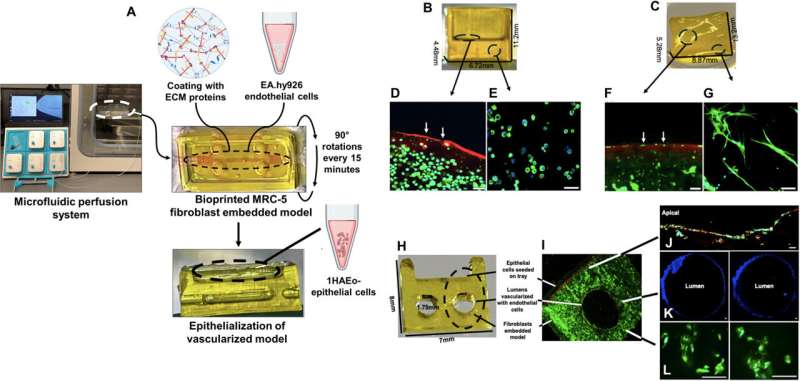Dr. Emmanuel Osei, assistant professor in the Irving K. Barber Faculty of Science, says the model produces tissue that closely resembles the complexity of a human lung, enabling improved testing of respiratory diseases and drug development.
“To conduct our research and the testing that’s required—where we’re studying the mechanisms of complex lung diseases to eventually find new drug targets—we need to be able to make models that are comparable to human tissues.”
The research team used a bioink composed of light-sensitive polymer-modified gelatin and a polymer called polyethylene glycol diacrylate to 3D print a hydrogel that includes multiple cell types and channels to recreate vessels, mimicking the structure of a human airway.

